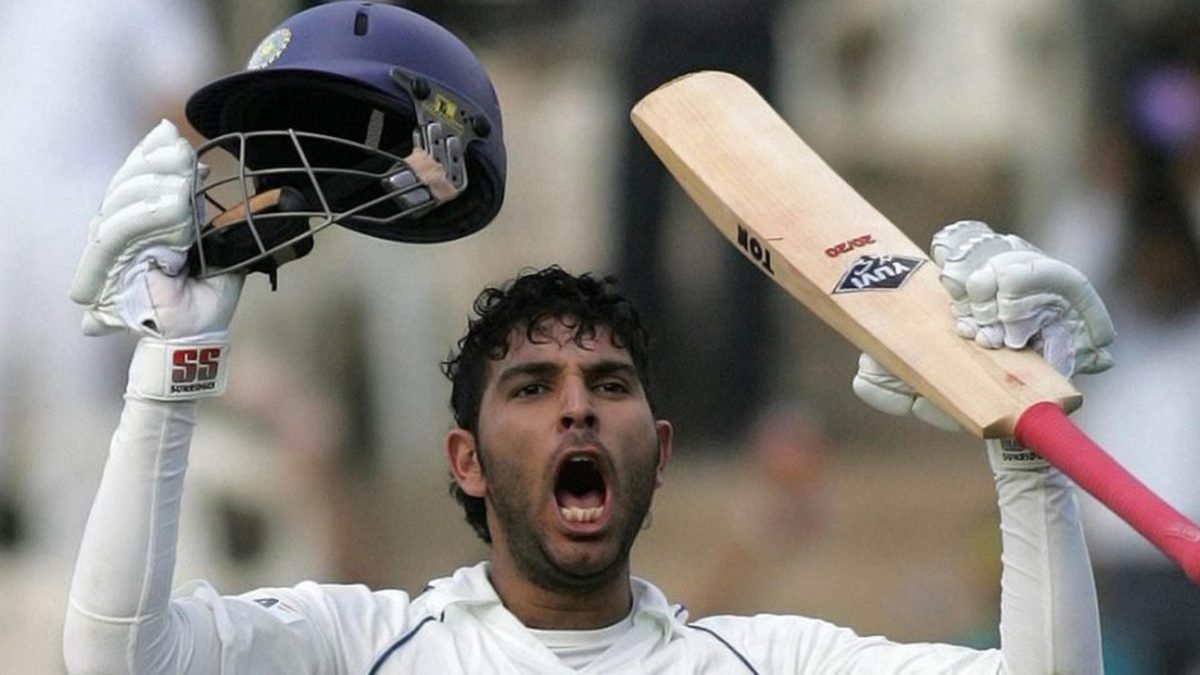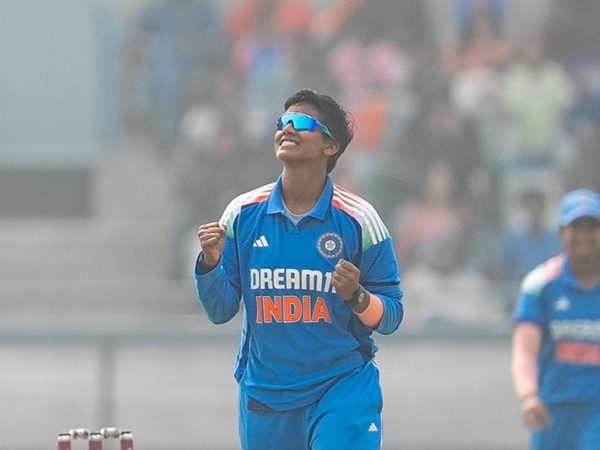
In an Indian Test middle-order laden with superstars, Yuvraj Singh was often consigned to the role of a backup, but there was more to his underwhelming Test career than just lack of chances.
Subscribe to the Wisden Cricket YouTube channel for post-match awards, player interviews, analysis and much more.
There was something immensely attractive about Yuvraj Singh’s batting. The high backlift met the ball with a clean, smooth swish, and the contact often sent the ball flying. A World Cup hero and one of T20I’s earliest stars, Yuvraj remains one of India’s most impactful white-ball stars of this century, even though his career tailed off in his final few years.
It’s often the case with white-ball superstars that they aren’t easily bracketed into being called ‘great’ because their Test numbers are not as impressive. Yuvraj had most of the elements required to be a good middle-order Test batsman: a sound technique, game awareness, and the adaptability to pace his game according to the situation. But his Test numbers ended up being an unconvincing tally next to his magnificent one-day credentials.
It’s widely considered that the lack of space in the Indian middle-order led to Yuvraj Singh’s half-baked Test career. In a team that had Rahul Dravid, Sachin Tendulkar, VVS Laxman, and Sourav Ganguly co-existing (with MS Dhoni, too, coming in by 2005), Test hopefuls were plain unlucky to have been born in the same era.
Was Yuvraj, too, an unfortunate victim of India’s batting riches of the 2000s?
The answer isn’t as simple. Yuvraj played 40 Tests – among specialist Indian batsmen barring the quartet mentioned above, only two others (Virender Sehwag and Gautam Gambhir) appeared in more matches across the length of Yuvraj’s career. The competition was extremely steep for the left-hander, but the chances were also fairly decent. When he was first given a chance, Yuvraj was the immediate fall-back option, earning his early opportunities as a like-for-like replacement when Ganguly was absent for one reason or another.
His 112 in Lahore, against Pakistan in only his third Test in 2004, exhibited the tremendous potential of a 22-year-old, who had till then only starred in flashy white-ball knocks. Yuvraj hit a century when no other Indian batsmen managed more than 49, and the blinder only enhanced the aura around his strokeplay.
Across 2004 to 2006, Ganguly played 19 Tests and averaged 45.24, while Yuvraj featured in 18, with an average of 35.20. There were flashes of brilliance in the middle, including a fine 122 in Karachi in 2005 (similar in ways to the Lahore effort.) There was also a string of nothing scores in the middle though, and fans were more often teased than satisfied.
Ganguly’s second wind reduced the chances for Yuvraj, but once he retired in late-2008, it was evident that the then 26-year-old Yuvraj would rightfully claim his place. A month later, he assembled his magnum opus, a masterful supporting hand of 85* in a tense chase against England in Chennai in December 2008, almost exactly a year after he had made his highest score of 169, against Pakistan.
Yet, the period succeeding Ganguly’s departure turned out to be the least successful for Yuvraj. Between 2007 and 2012, the year of his last Test, Yuvraj didn’t cross 75 once, often engaging in supporting roles that were moderate without being too convincing. His overall record away from home also remained suspect – he managed just two fifties in 20 innings outside Asia, averaging 19.61, suffering from the usual issues of moving ball and short lengths. Lack of clarity over his role wasn’t a reason either – barring one, Yuvraj played all his 62 innings between positions five and seven.
No doubt, illness significantly debilitated the second half of his playing career, and he was just not the same player after fighting cancer. However, a significant portion of his Test career – 34 of his 40 Tests – came before the 2011 World Cup itself. By 2010, Cheteshwar Pujara had entered the setup, slowly taking one of the spots, and by the beginning of 2012, Virat Kohli had found a place for himself, with the two taking the place of the retiring Dravid and Laxman, respectively. Between 2011 and 2012, Yuvraj’s two fifties in ten innings were just not enough.
In hindsight, Yuvraj could have probably played more Tests, and there’s enough evidence to suggest he would have done a sufficiently decent job. However, there were obvious shortcomings that extended beyond just lack of opportunities, and in a Test career that promised much more, his red-ball potential just couldn’t materialise into something special. The regret is still evident in Indian fans, and in the man himself. “Probably next life! When I’m not 12th man for seven years,” he recently replied to Wisden India’s Twitter post on Indian Test cricketers who could have played more. One way or another, it remains one of Indian cricket’s biggest ‘what if’ stories.








